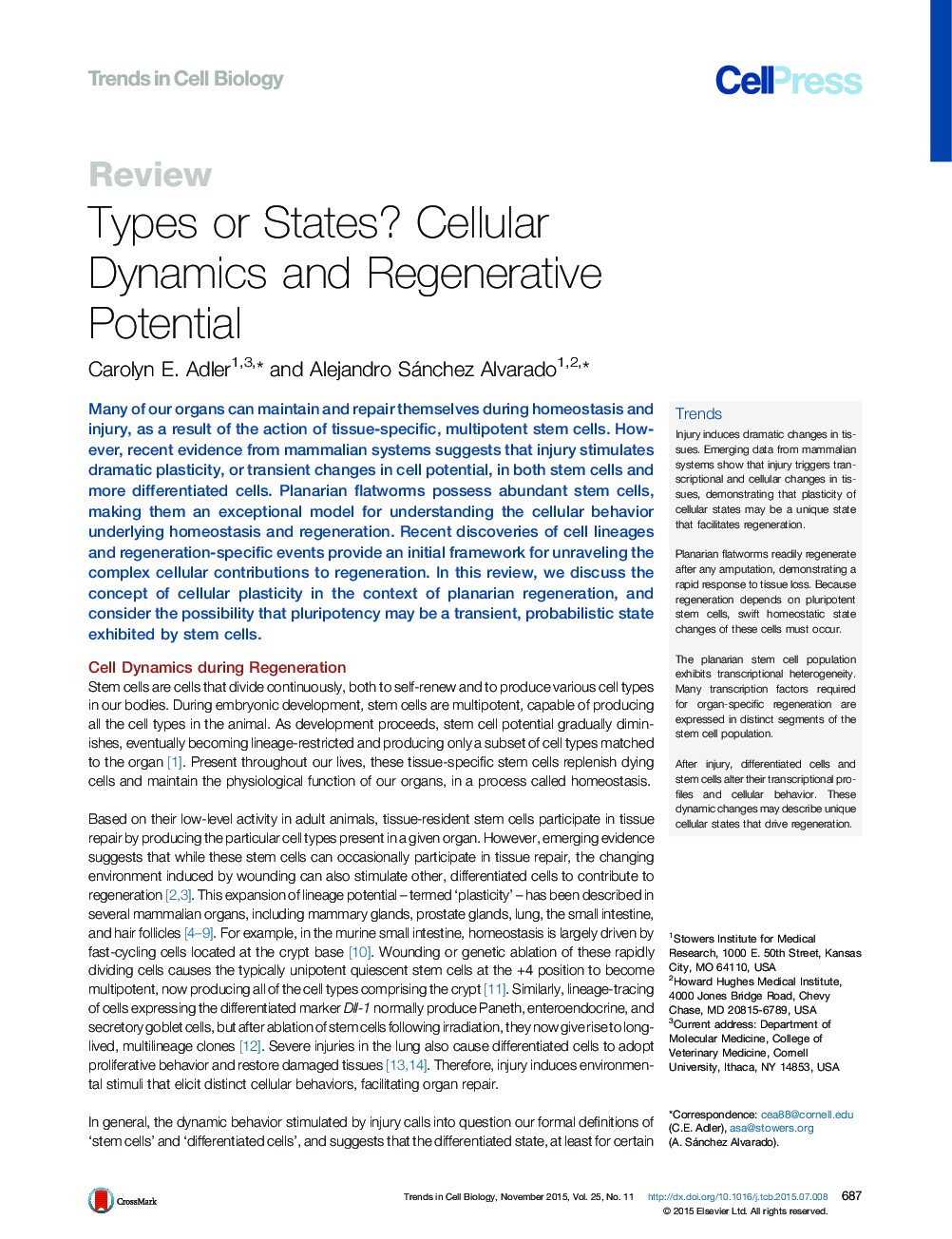| Article ID | Journal | Published Year | Pages | File Type |
|---|---|---|---|---|
| 2204284 | Trends in Cell Biology | 2015 | 10 Pages |
Many of our organs can maintain and repair themselves during homeostasis and injury, as a result of the action of tissue-specific, multipotent stem cells. However, recent evidence from mammalian systems suggests that injury stimulates dramatic plasticity, or transient changes in cell potential, in both stem cells and more differentiated cells. Planarian flatworms possess abundant stem cells, making them an exceptional model for understanding the cellular behavior underlying homeostasis and regeneration. Recent discoveries of cell lineages and regeneration-specific events provide an initial framework for unraveling the complex cellular contributions to regeneration. In this review, we discuss the concept of cellular plasticity in the context of planarian regeneration, and consider the possibility that pluripotency may be a transient, probabilistic state exhibited by stem cells.
TrendsInjury induces dramatic changes in tissues. Emerging data from mammalian systems show that injury triggers transcriptional and cellular changes in tissues, demonstrating that plasticity of cellular states may be a unique state that facilitates regeneration.Planarian flatworms readily regenerate after any amputation, demonstrating a rapid response to tissue loss. Because regeneration depends on pluripotent stem cells, swift homeostatic state changes of these cells must occur.The planarian stem cell population exhibits transcriptional heterogeneity. Many transcription factors required for organ-specific regeneration are expressed in distinct segments of the stem cell population.After injury, differentiated cells and stem cells alter their transcriptional profiles and cellular behavior. These dynamic changes may describe unique cellular states that drive regeneration.
